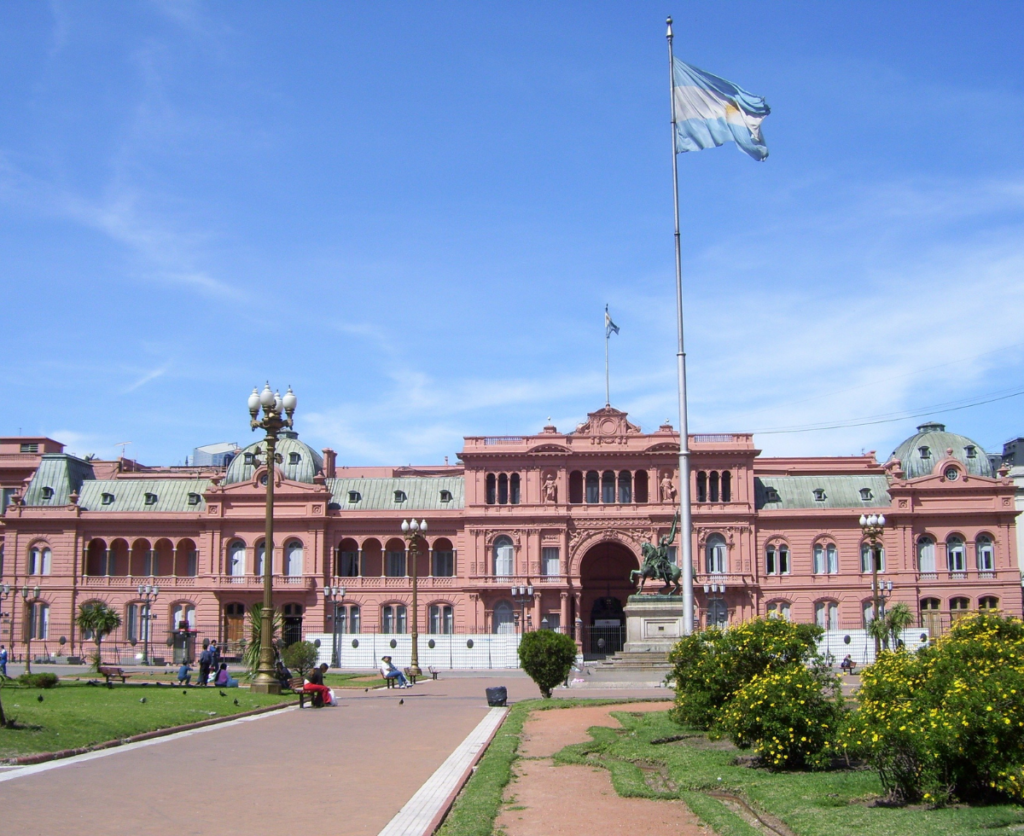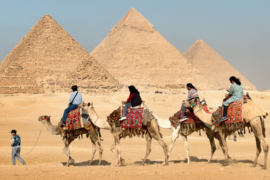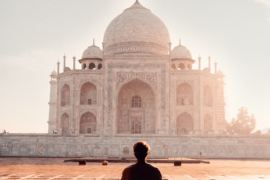Decoding Argentina’s Seasons. Welcome to the land of captivating landscapes, vibrant culture, and diverse natural wonders – Argentina. From the breathtaking beauty of Patagonia to the rhythmical energy of Buenos Aires, this South American gem offers an unforgettable journey through its changing seasons. Whether you’re a thrill-seeking adventurer or a food and wine connoisseur, Argentina has something to offer every traveler all year round. But with its vast expanse and varying climates, decoding Argentina’s seasons can be a daunting task. Fear not, as we embark on a journey to unravel the secrets of this mesmerizing country’s weather patterns. Join us as we navigate through the scorching summers, crisp autumns, chilly winters, and blossoming springs, revealing the best times to explore Argentina’s iconic destinations. So pack your bags, grab your camera, and get ready for an unforgettable adventure as we delve into the enchanting seasons of Argentina.
It may interest you: Tour Ushuaia

The Four Seasons in Argentina
Argentina experiences four distinct seasons: summer, autumn, winter, and spring. Each season brings its own unique charm and offers different opportunities for exploration. The country’s vast size and diverse geography contribute to variations in climate and weather patterns across different regions. From the icy landscapes of Patagonia to the bustling streets of Buenos Aires, let’s take a closer look at how each season unfolds in Argentina.Decoding Argentina’s Seasons.
Weather and Climate in Patagonia
Patagonia, located in the southern part of Argentina, is known for its stunning natural beauty. This region encompasses diverse landscapes, including glaciers, mountains, and fjords. Due to its proximity to the South Pole, Patagonia experiences cooler temperatures throughout the year. However, the weather can vary significantly depending on the season.
In summer (December to February), Patagonia comes alive with longer days, milder temperatures, and vibrant flora. This is the ideal time for outdoor activities such as trekking, camping, and wildlife spotting. The region’s famous national parks, such as Los Glaciares and Torres del Paine, offer breathtaking views of glaciers and rugged mountains.
Autumn (March to May) brings cooler temperatures and stunning displays of fall foliage. The landscapes transform into a vibrant palette of reds, oranges, and yellows, creating a picturesque backdrop for hiking and photography enthusiasts. The weather remains relatively mild, making it a great time to explore the region’s hiking trails and enjoy the tranquility of nature.
Winter (June to August) in Patagonia is characterized by freezing temperatures and occasional snowfall. While some areas become inaccessible due to heavy snow, winter offers a unique opportunity for adventure seekers. Skiing, snowboarding, and ice climbing are popular activities in Patagonia during this season. The region’s snowy landscapes provide a magical setting for winter sports enthusiasts.
Spring (September to November) marks the transition from winter to summer in Patagonia. As the temperatures begin to rise, the region bursts into life with blooming flowers and migrating wildlife. Spring is an excellent time for birdwatching, as many species return to Patagonia after their winter migration. It is also a great season for hiking and exploring the region’s beautiful lakes and mountains.
Best Time to Visit Patagonia
The best time to visit Patagonia depends on your interests and the activities you wish to engage in. If you’re looking to experience the region’s stunning landscapes and indulge in outdoor adventures, the summer months of December to February are ideal. The longer days and milder temperatures create the perfect conditions for hiking, camping, and wildlife watching.
For those who prefer cooler temperatures and the beauty of fall foliage, autumn (March to May) is the best time to visit Patagonia. The landscapes transform into a colorful wonderland, providing a picturesque backdrop for outdoor activities and photography.
Winter (June to August) is perfect for winter sports enthusiasts. The snow-covered mountains offer excellent opportunities for skiing, snowboarding, and ice climbing. However, it’s important to note that some areas may be inaccessible due to heavy snowfall, so it’s essential to check the conditions and plan accordingly.
Spring (September to November) is a fantastic time to witness the region’s rebirth as flowers bloom, and wildlife returns. The mild temperatures and beautiful landscapes make it an excellent season for hiking and exploring the national parks.Decoding Argentina’s Seasons.
Exploring the Seasons in Buenos Aires
Buenos Aires, the vibrant capital of Argentina, also experiences distinct seasons. Situated in the central-eastern part of the country, Buenos Aires has a temperate climate with hot summers and mild winters. Let’s dive into what each season has to offer in this bustling metropolis.
Summer (December to February) in Buenos Aires is characterized by hot and humid weather. The city comes alive with outdoor festivals, concerts, and street performances. From tango shows to open-air markets, there is no shortage of cultural experiences to indulge in during the summer months. However, it’s important to be prepared for the heat and humidity by staying hydrated and seeking shade during the hottest parts of the day.
Autumn (March to May) brings relief from the summer heat, with milder temperatures and a pleasant breeze. This season is perfect for exploring Buenos Aires’ many parks and gardens, such as the iconic Palermo Woods. The city’s vibrant art scene also thrives during autumn, with galleries and museums hosting exhibitions showcasing local and international talent.
Winter (June to August) in Buenos Aires is relatively mild compared to other parts of the country. While temperatures can drop, they rarely reach freezing levels. This is a great time to immerse yourself in the city’s rich history and culture by visiting museums, theaters, and historical sites. The annual Buenos Aires Tango Festival, held in August, is a must-visit for dance enthusiasts.
Spring (September to November) brings pleasant weather and an explosion of color to Buenos Aires. The city’s parks and plazas are adorned with blooming flowers, creating a picturesque setting for picnics and leisurely strolls. Spring is also the season of outdoor markets and food festivals, where you can sample delicious local cuisine and immerse yourself in the city’s vibrant culinary scene.
Must-See Attractions in Buenos Aires During Each Season
No matter which season you choose to visit Buenos Aires, there are several must-see attractions that should be on every traveler’s itinerary. Here are some highlights for each season:
Summer:
- La Boca neighborhood: Known for its colorful houses and tango culture, La Boca is a vibrant neighborhood that comes alive during the summer months.
- Puerto Madero: This waterfront area offers stunning views of the city skyline and is a great place to enjoy a leisurely stroll or dine at one of the many waterfront restaurants.
Autumn:
- Recoleta Cemetery: This famous cemetery is a captivating place to visit, with its ornate mausoleums and rich history.
- MALBA: The Museum of Latin American Art of Buenos Aires is a must-visit for art lovers, showcasing an impressive collection of modern and contemporary art.
Winter:
- Teatro Colon: This world-renowned opera house offers guided tours that allow you to appreciate its architectural beauty and learn about its rich history.
- Plaza de Mayo: The city’s main square is a historic site, home to important landmarks such as the Casa Rosada (Pink House) and the Metropolitan Cathedral.
Spring:
- Palermo Rose Garden: Located in the heart of Palermo, this beautiful garden showcases over 1,000 varieties of roses. Take a leisurely stroll and enjoy the fragrant blooms.
- Museo Nacional de Bellas Artes: Explore the impressive collection of European and Argentine art at this renowned museum.
Planning Your Trip to Argentina Based on the Seasons
When planning your trip to Argentina, it’s important to consider the seasons and the activities you wish to engage in. Here are a few tips to help you make the most of your visit:
- Research the weather and climate of the specific regions you plan to visit. Argentina’s size and diverse geography mean that different areas can experience vastly different weather patterns.
- Pack accordingly. Depending on the season and region, you may need to pack clothing for warm weather, cold weather, or both. Layers are always a good idea, as temperatures can fluctuate throughout the day.
- Consider your interests and preferences. If you enjoy outdoor activities, such as hiking or skiing, plan your visit during the appropriate season. If you prefer cultural experiences, research festivals and events happening during your chosen travel dates.
- Be flexible with your itinerary. Weather conditions can sometimes impact your plans, especially in areas prone to heavy snowfall or rainfall. Have backup options and be prepared to adapt your schedule if needed.
- Check for any seasonal closures or limited access to certain attractions. Some national parks or hiking trails may have restrictions during certain seasons, so it’s important to plan accordingly.
- Take advantage of local knowledge. Consult with locals or travel experts to get recommendations on the best times to visit specific destinations or participate in certain activities.
Popular Activities and Festivals in Each Season
Argentina is a country that loves to celebrate, and each season brings unique festivals and activities. Here are some popular events to look out for:
Summer:
- Fiesta Nacional del Sol: This festival, held in San Juan, celebrates the sun and showcases the region’s cultural heritage through music, dance, and food.
- Carnival: While Carnival is celebrated throughout Argentina, the most famous festivities take place in Gualeguaychu, where colorful parades and vibrant costumes take over the streets.
Autumn:
- Grape Harvest Festival: Mendoza, Argentina’s wine region, hosts this annual festival to celebrate the grape harvest. Enjoy wine tastings, traditional food, and lively performances.
- Fiesta Nacional de la Vendimia: The National Grape Harvest Festival in Mendoza culminates in a spectacular show featuring music, dance, and the crowning of the Harvest Queen.
Winter:
- Semana de la Dulzura: This sweet celebration takes place in August and encourages people to spread kindness through the exchange of sweets and treats.
- Festival Nacional de la Chacarera: This folk music festival in Santiago del Estero showcases traditional Argentine music and dance, attracting artists from all over the country.
Spring:
- Oktoberfest Argentina: Villa General Belgrano hosts Argentina’s version of the famous German beer festival, complete with traditional music, food, and, of course, beer.
- Festival Nacional del Folclore: Held in Cosquín, this festival celebrates the country’s folk music and dance traditions, with performances from renowned artists.
Conclusion: Choosing the Best Time to Visit Argentina
Argentina’s diverse seasons offer something for every traveler, from outdoor adventures in Patagonia to cultural experiences in Buenos Aires. Decoding Argentina’s seasons and understanding the weather patterns can help you plan the perfect trip and make the most of your time in this captivating country. Whether you’re chasing the thrill of winter sports, exploring stunning landscapes, or immersing yourself in vibrant festivals, Argentina has it all. So pack your bags, embrace the changing seasons, and get ready for an unforgettable journey through the heart of South America.Decoding Argentina’s Seasons.
Make your dream trip possible, receive a personalized quote and payment facilities to suit your needs
No compromises!





